Affiliate links on Android Authority may earn us a commission. Learn more.
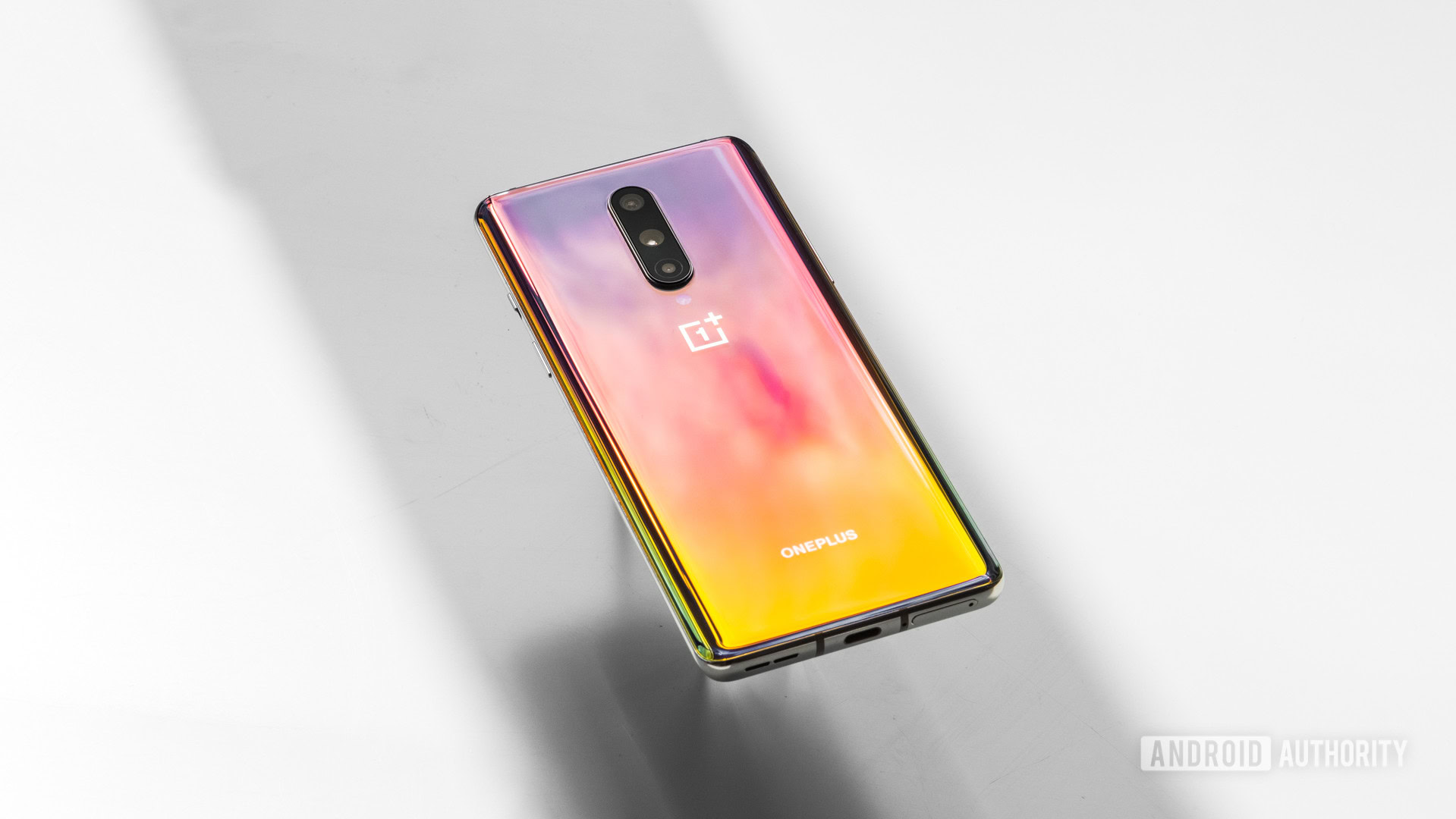
OnePlus 8 review: Watered down yet still worthy
Published onJune 20, 2022
OnePlus 8
What we like
What we don't like
Our scores
OnePlus 8
Many phone makers have adopted the small/large phone lineup. Apple, Google, Samsung, and others sell two versions of their flagships with size often standing as the primary differentiator. OnePlus, now wholly invested in the flagship game, is doing the same. The OnePlus 8 is 80% of the larger, more feature-rich OnePlus 8 Pro. OnePlus dialed back the size and the specs of the 8 to make it more appealing to certain buyers — while also dropping the price of entry. The result is a device that is more watered down than it should be, and yet still rises to the challenge in some respects.
Did OnePlus make the right choices here? Find out in Android Authority‘s OnePlus 8 review.
OnePlus 8 review: Who is this phone for?
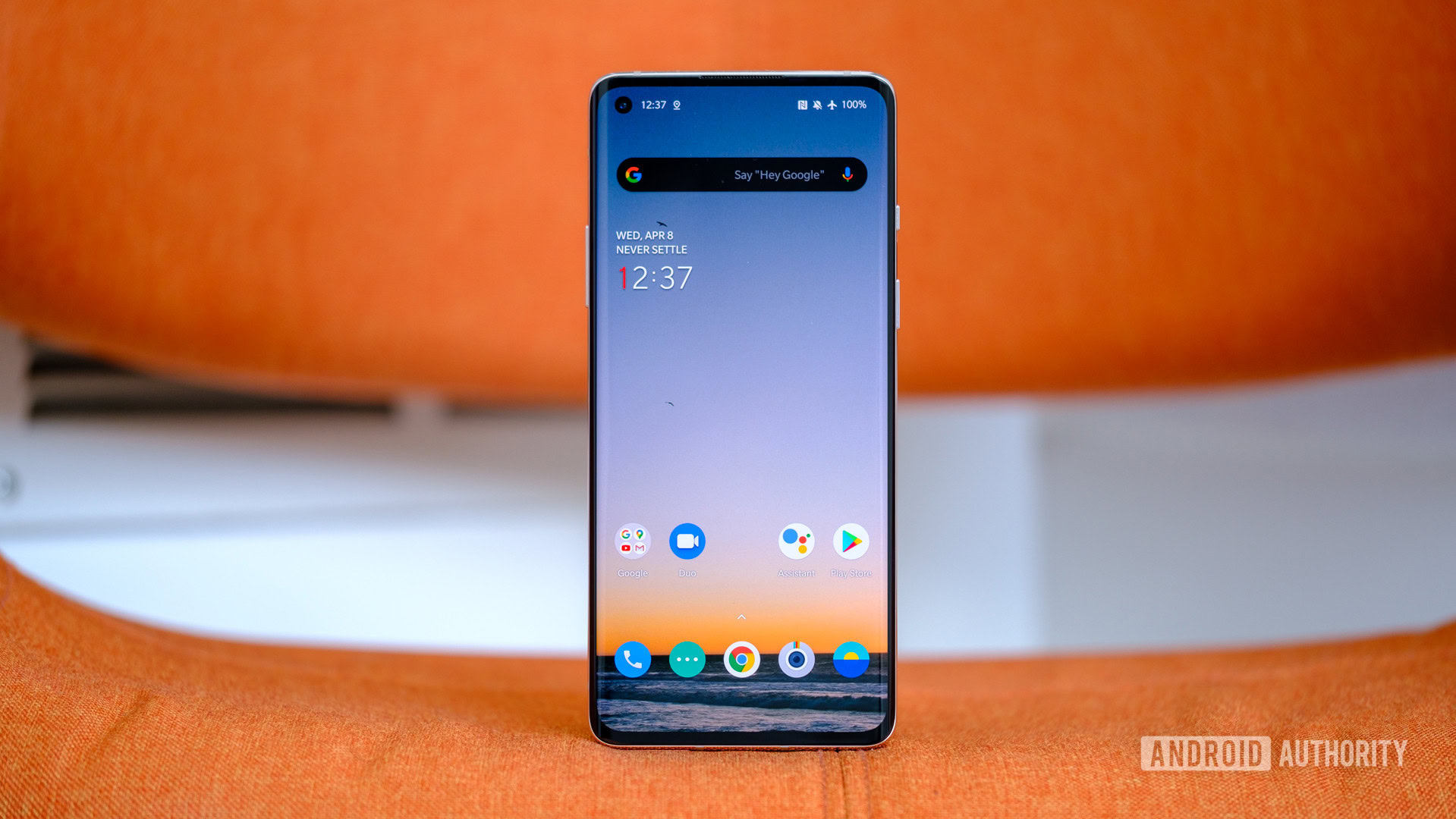
The OnePlus 8 is for two different groups of people. The first group pines after today’s top-tier flagships, but simply doesn’t want to (or can’t) spend the $1,000 needed to get one. It’s also for people who want a solid device, but not necessarily the biggest whopper on the store shelf. And let’s face it, there are a lot of them. Samsung, LG, and others have kicked out some seriously big phones lately. Bigger isn’t always better, and some people like to keep size in check for usability or other reasons.
The OnePlus 8 covers this ground, though it’s not by itself. It matches up well in terms of size and/or cost against the now-discounted Samsung Galaxy S20 and the Google Pixel 4 XL, both of which are available for much less than their original launch prices. The OnePlus 8 may also stand as one of the cheapest points of entry for those looking to adopt 5G.
Here’s how these factors add up.
Design: Setting a new bar
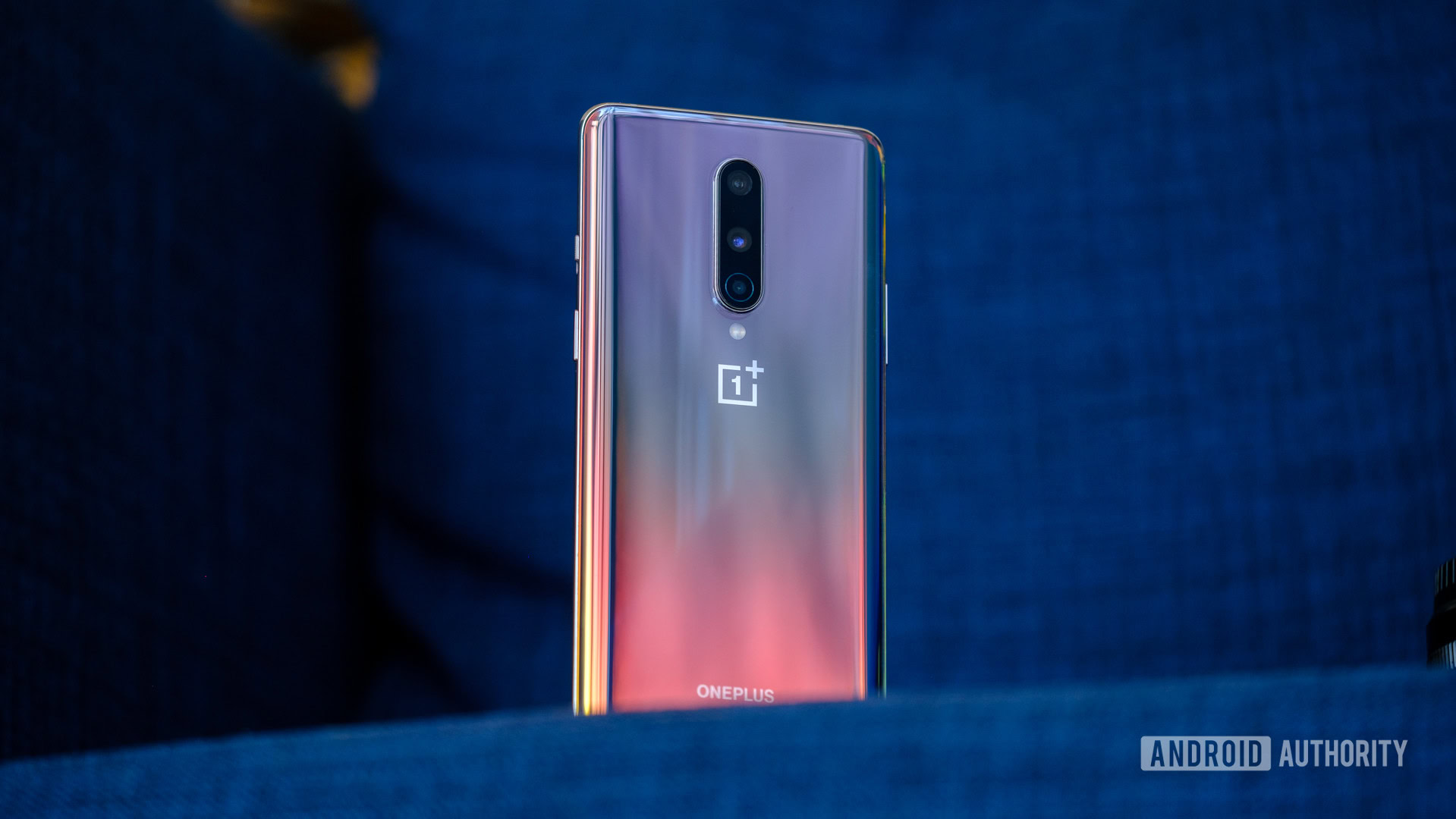
- 3D curved Corning Gorilla Glass 3
- 160.2 x 72.9 x 8.0mm
- 180g
- USB-C
OnePlus has long employed an efficiency of design that is modern and simple. Look back at phones such as the OnePlus 5 and 6 series, and you see the OnePlus taking simplicity almost to the point of blandness. The company started shaking things up with the OnePlus 7 series, which introduced bigger sizes and bolder colors. The OnePlus 8 takes the next, natural step along this evolutionary path.
See also: A history of OnePlus phones
The colors are probably the biggest giveaway. Sure, OnePlus offered some attractive blues on its older phones, but the 8 steps up the color selection to Onyx Black, Glacial Green, and Interstellar Glow. Bummer that the Onyx Black and Glacial Green only come with 8GB of storage. You have to upgrade to the $799 Interstellar Glow model if you want the best RAM/storage combo. OnePlus lent us the last of these three and it’s a stunner.
The OnePlus 8 has a mirror-like finish that changes hue depending on the angle from which you view it. It looks like a sunset off the West Coast. Even though you’re likely to slap a case on the phone (and in fact I recommend that you check out these options), this is one of the most striking phones from OnePlus. It’s worth looking at and showing off. I wish it weren’t so good at collecting nasty fingerprints.
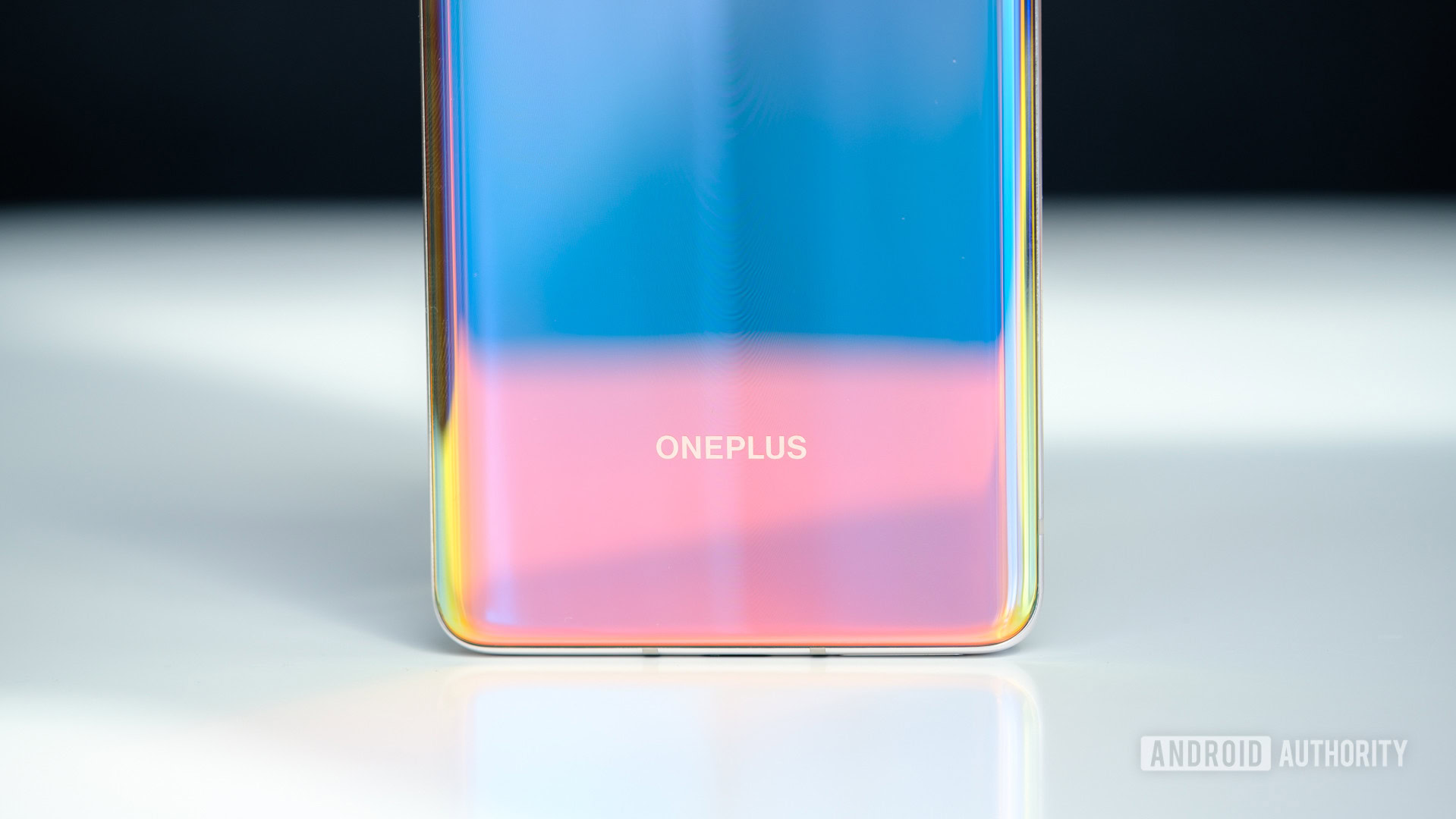
Beyond the fancy color, the design is what you expect from a 2020 flagship. Curved glass wraps around the front and rear surfaces, separated only by a thin sliver of aluminum supporting the chassis. OnePlus did a great job marrying the metal and glass; the seam between the two is almost imperceptible. The frame is chrome-like in its reflectivity.
The OnePlus 8 is scant millimeters lesser in its dimensions when compared to the larger 8 Pro.
About the size. The 8 is naught but scant millimeters lesser in its dimensions when compared to the larger 8 Pro. Specifically, it’s 5mm shorter, 1.45mm narrower, and 0.5mm thinner (or just 13% tinier in terms of volume). More significantly, the smaller phone is less weighty at 180g compared to the 8 Pro’s 199g. There’s no question the 8 is an easier phone to hold and use, but I’d never call it small.
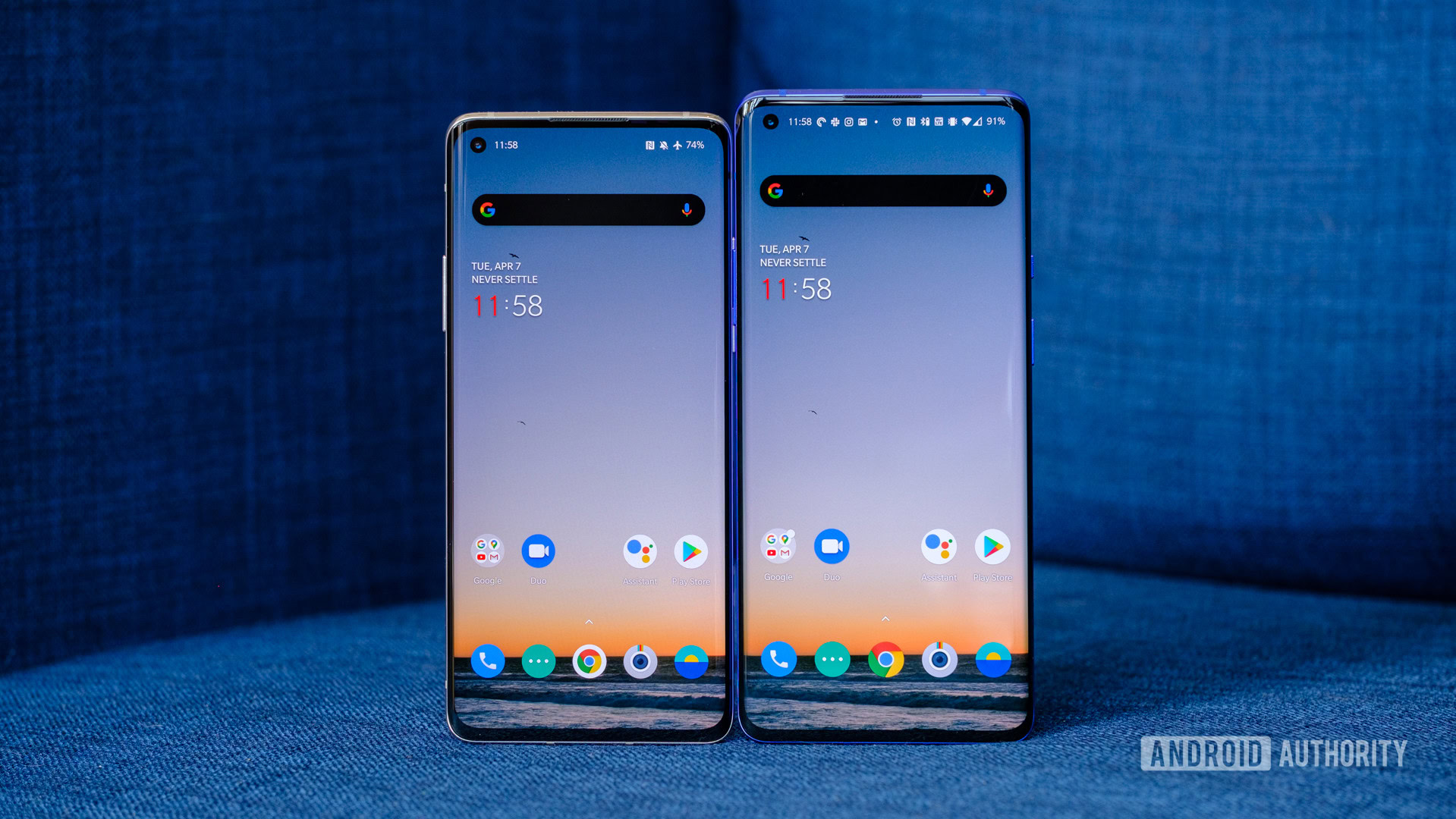
The slippery glass glides into your pockets with no resistance. It also glides off hard, flat surfaces like desks and tables if you’re not careful. It might even slip from your grip. Put a case on it.
True to OnePlus form, the camera array is a vertical line of lenses. There are three in all, with the flash set below the raised camera module. Given the monstrous modules on competing devices, I’m quite pleased with the restrained camera design of the OnePlus 8.
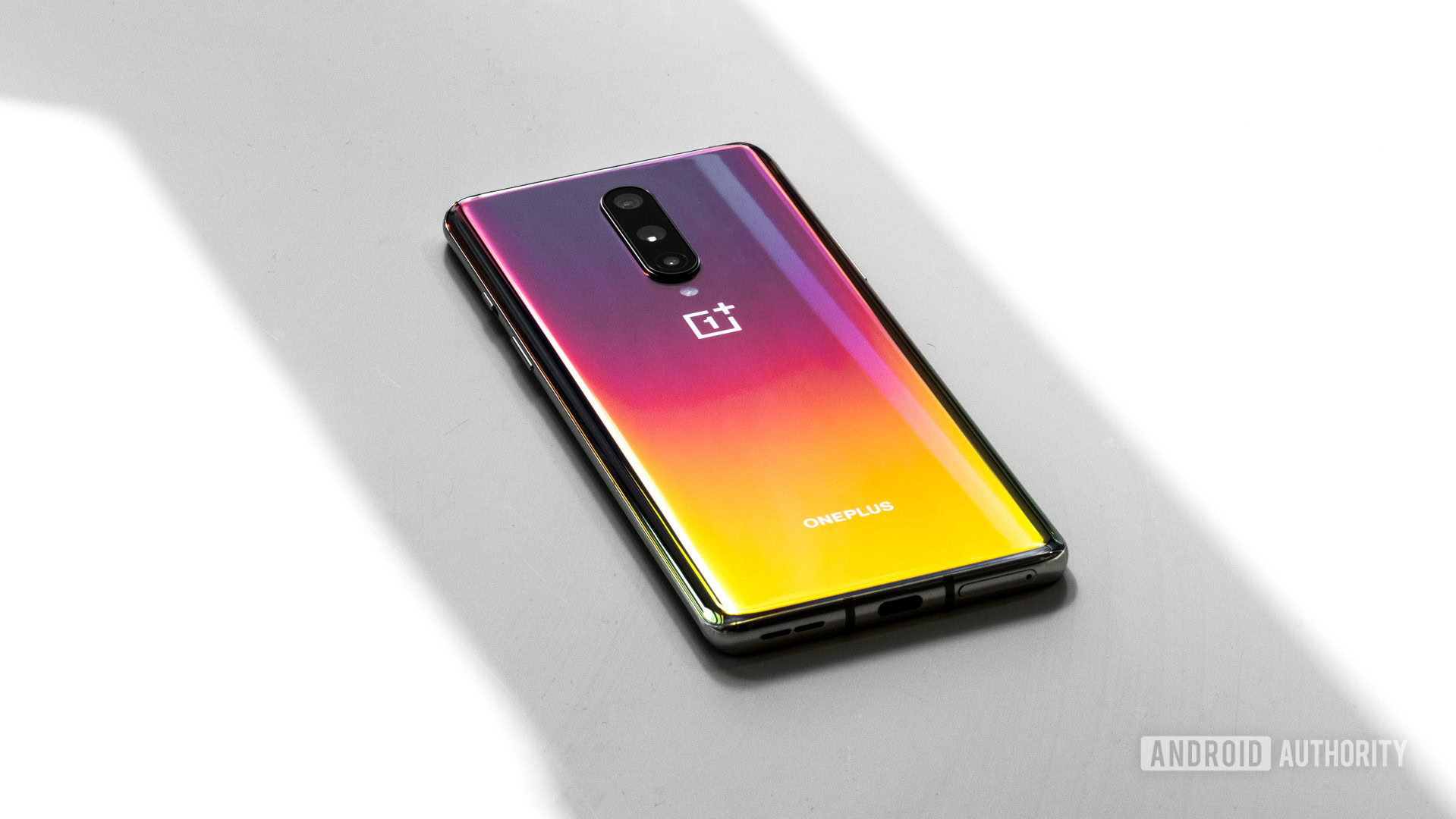
The famed triple-action ringer switch is present and accounted for.
Other aspects of the design differ little from other OnePlus devices. The famed triple-action ringer switch is present and accounted for. This is one of the best hardware features. It is perched high on the right edge. The screen lock button is just below it and the volume toggle is on the left edge. You’ll see the USB-C port, SIM card tray, and speaker slits on the bottom edge. A small pinhole mic is the only element on the top edge.
Last, international and unlocked versions of the phone won’t carry an official IP rating, though they are protected from dirt and liquid to some degree. The US carrier-branded OnePlus 8 models, however, will be rated IP68. Nearly every recent flagship — including the OnePlus 8 Pro — carries such a rating.
The OnePlus 8 is an excellent piece of hardware that matches its peers in fit, finish, and function — for the most part.
Display: Status quo
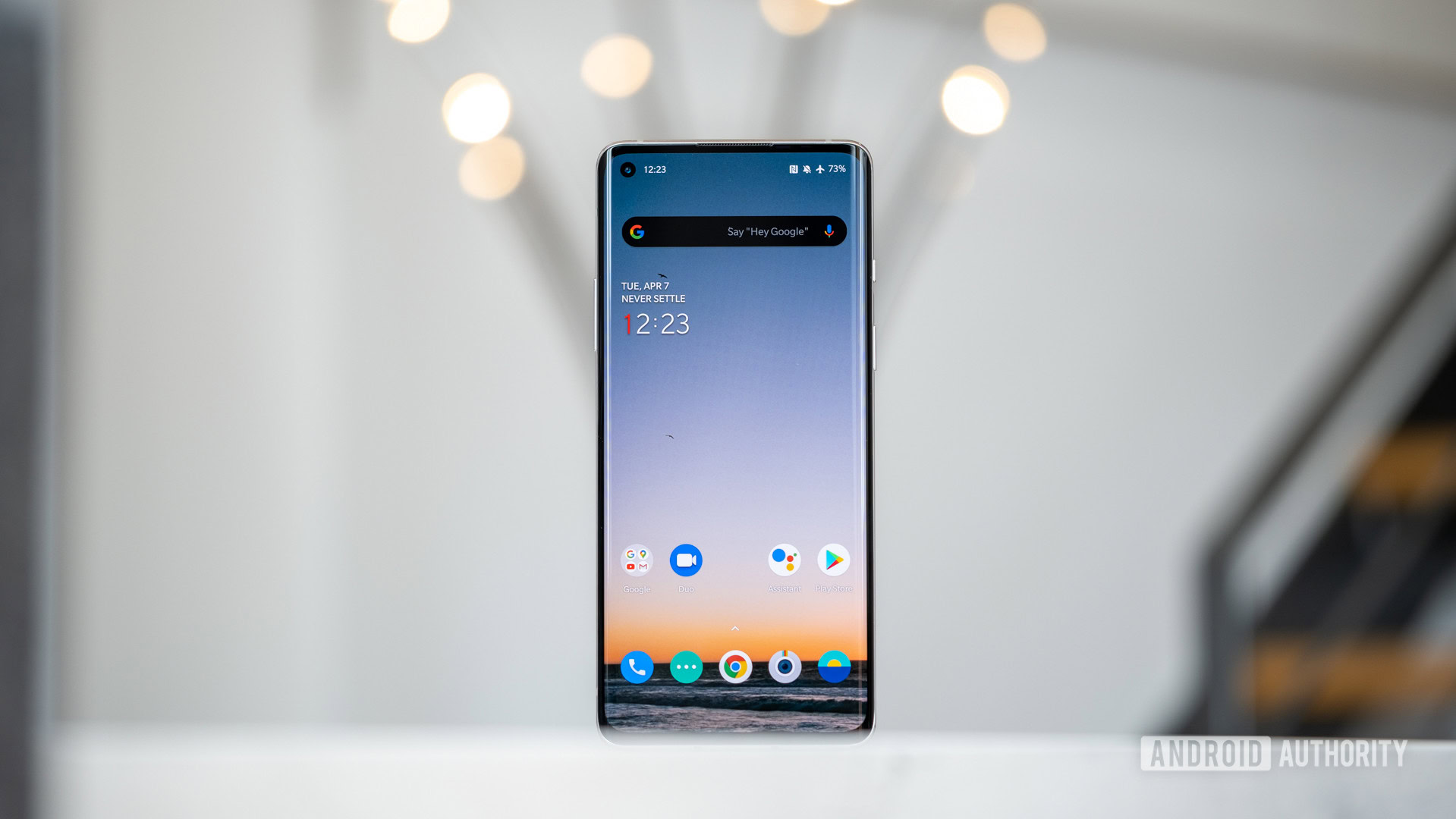
- 6.55-inch AMOLED
- Full HD+ 2,400 x 1,080 (20:9)
- 90Hz refresh rate, 402ppi
- In-display fingerprint sensor
The smaller screen of the 8 plays in a different ballpark to the stellar OnePlus 8 Pro, though it’s still really, really good.
OnePlus was one of the earlier adopters of high refresh rate displays. We saw a 90Hz panel on the OnePlus 7T in 2019. The OnePlus 8 Pro jumped to a Quad HD Plus screen at 120Hz. The 8, however, has a Full HD+ screen at 90Hz. That means it’s less pixel-dense and not as quick to refresh, though it matches the rate of screens from Google, HUAWEI, and Xiaomi. Factory settings for the majority of phones that support these high resolutions and refresh rates (including the 8 Pro, S20, etc.) is Full HD+ and 60Hz. In other words, you have to go out of your way to find the better experience.
Despite the lesser specs, I can’t fault the screen. It impresses the eye, particularly when set to 90Hz. Motion is smooth, colors are vibrant, and the resolution is more than sufficient for the needs of the average smartphone owner.
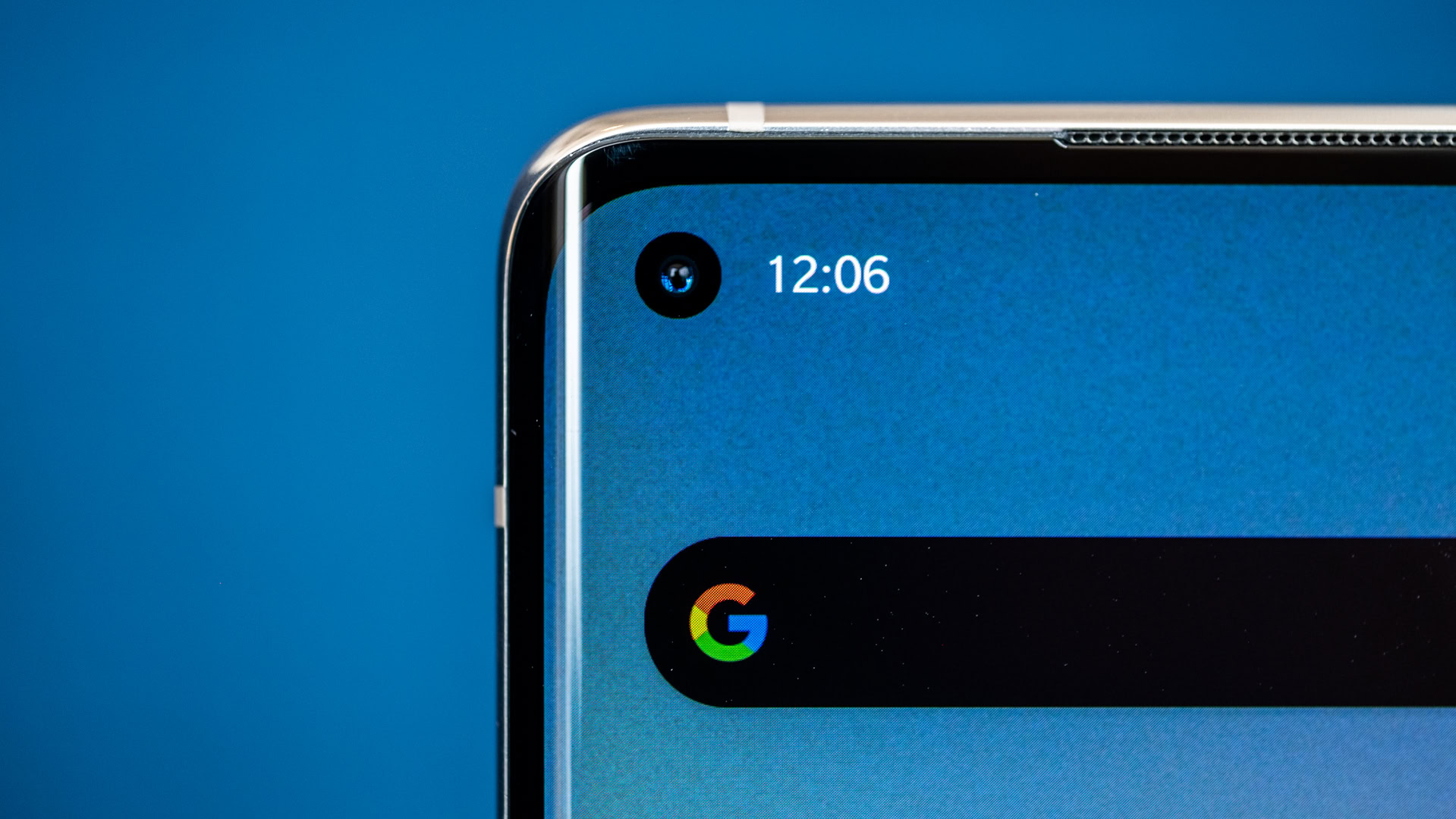
Unlike older OnePlus panels, this one has a punch hole for the selfie camera. (No more pop-up cam!) The hole is located in the top-left corner, where it is practically out of sight. I like that OnePlus allows you to hide the camera cutout to a degree by controlling the color of the status bar. Personally, I think it looks better when visible.
Last, the fingerprint scanner is located under the glass near the bottom edge. Now that we’re several generations into in-display scanner tech, I can tell you this is one of the most acceptable renditions thereof. It took a sec to train it, but it was fast and consistent. I’d go so far as to call it as fast as using a pattern, and even faster than using a four or six-digit PIN. A camera-based face unlock is present if that’s what you prefer.
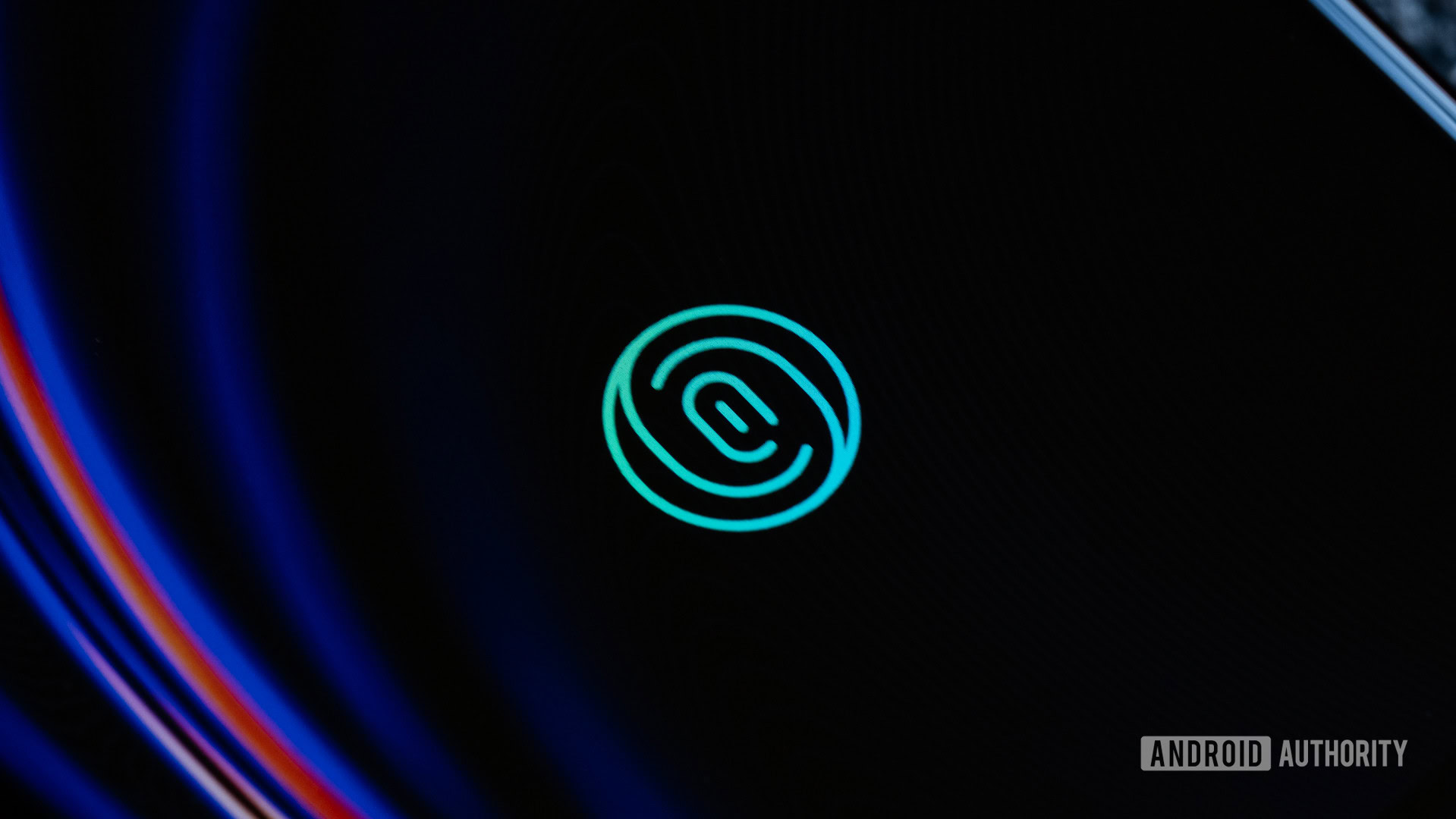
It may not be as pixel-rich as competing screens, but the OnePlus 8 display is absolutely all anyone needs to be happy with their smartphone experience.
Performance: Plucky you
Breathing fire
- Qualcomm Snapdragon 865
- Adreno 650 GPU
- 8GB / 12GB LPDDR4X
- 128GB / 256GB UFS 3.0 2-LANE
Whether you run the OnePlus 8 with the screen set to 60Hz or 90Hz, you’re going to get world-class performance. The phone fared well on benchmarks and delivered comparable results to other 865-based phones, and clearly destroyed phones based on the Snapdragon 855/855 Plus. Impressively, the phone ran our Speed Test G metric, which blends CPU/GPU performance, in a record 1:27:54. That even beat the S20 Ultra by 1.3 seconds.
More importantly, the phone is a joy to use. Everything about the OnePlus 8 is fast and furious. Regular apps loaded in a blink, Play Store updates installed in two blinks, and even heavy-duty apps such as the camera launched in an instant.
In terms of the competitive field, the OnePlus 8 may not be a “Pro” or a “Plus” model, but it’s still got it where it counts. It’s a stealthy smartphone that surpasses the class and is still more than capable even in the age of Snapdragon 888 devices.
Lethal lithium
- 4,300mAh
- Warp Charge 30T (5V/6A)
Along with a smaller chassis and screen size, yes, you’ve got to expect a smaller battery. The OnePlus 8’s power cell drops from the 8 Pro’s 4,510 to 4,300mAh. That’s a drop of just 4.6% in terms of capacity, though it’s much larger than the 3,800mAh pack in the OnePlus 7T. Competing devices, such as the S20 Plus, are in the same ballpark with 4,500mAh.
How does it hold up? Superbly. The phone consistently pushed through a day and a half of normal use, and sometimes extended close to one and three-quarters days. That means I’d unplug the phone at 8am and the battery wouldn’t die until after dinner the following day. That’s better than most phones in the market. In terms of screen-on time, I routinely saw in excess of seven hours. Most competing flagships are posting numbers in the six-hour range, so the OnePlus 8 is, again, a rare performer. My use includes listening to Spotify with Bluetooth headphones, a lot of Twitter and Slack, plenty of email, and browsing.
Our objective battery tests saw the phone push through 11.5 hours of browsing time, 16.5 hours of video playback, and 9.5 hours of mixed use (browsing and video.)
OnePlus made sure the OnePlus 8 charges as rapidly as possible when plugged in.
One of the major upgrades to the OnePlus 8 Pro is the company’s too-long-in-coming adoption of wireless charging tech. The big Pro enjoys speedy wired and wireless charging. Alas, the standard 8 model lacks wireless charging. This is a shame, as most competing flagships these days in fact do offer wireless charging. To offset this, OnePlus made sure the OnePlus 8 charges rapidly when plugged in. The included 30W charger pushes current into the lithium-ion battery at astounding speed. Just thirty minutes nets a 66% charge, which is more than enough when topping up between work and a night out. A full charge took just 63 minutes.
Bottom line, the OnePlus 8 is a battery champ and puts its unique features (relatively smaller, lower-res, slower display) to good use where it counts the most.
Camera
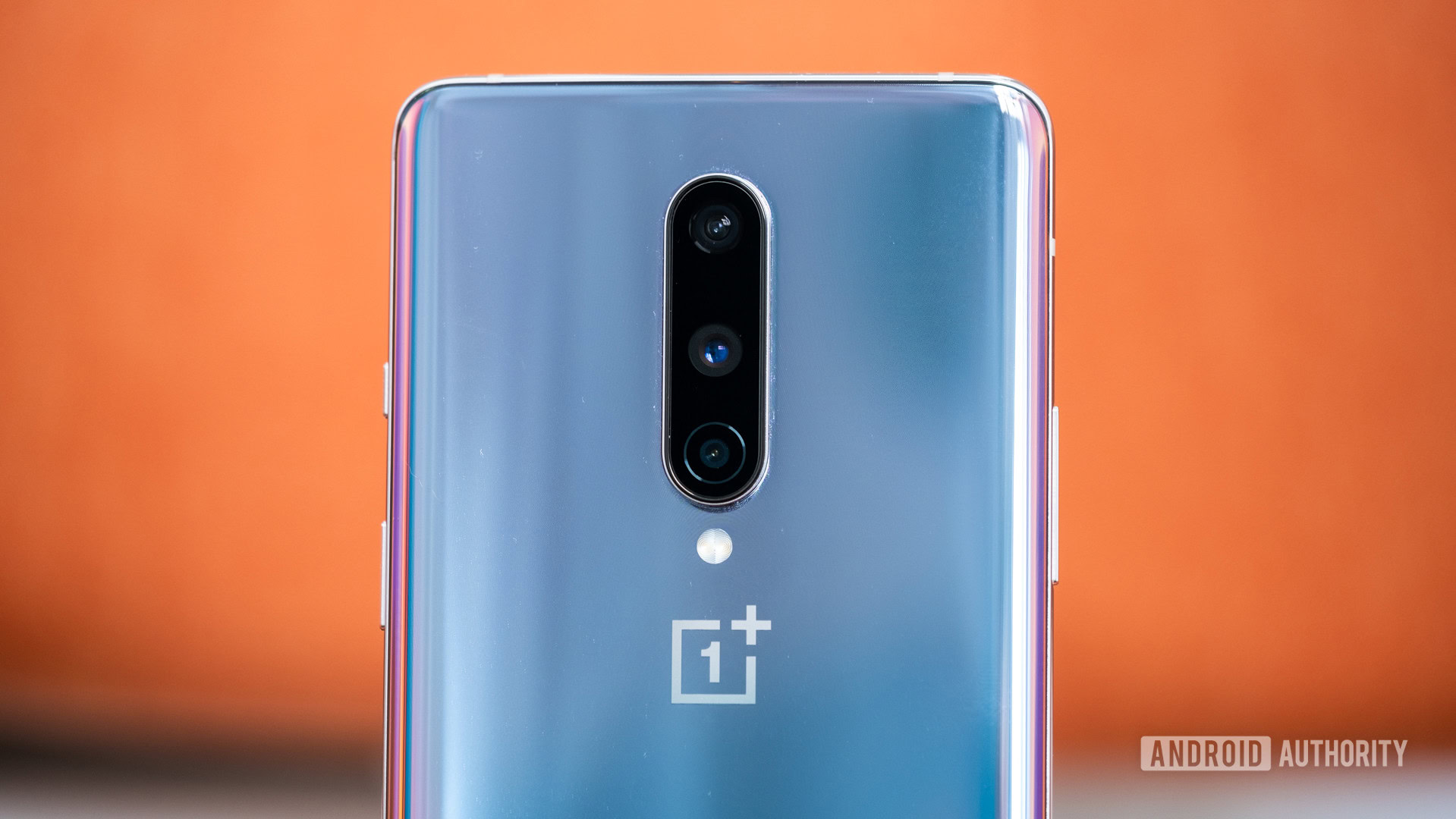
- Rear:
- 48MP, f/1.78, 0.8µm, OIS, EIS
- 2MP macro, f/2.4, 1.75µm
- 16MP ultrawide, f/2.2, 116-deg. FoV
- Front:
- Selfie: 16MP, f/2.0, 1.0µm, EIS, fixed focus
- Video:
- 8K @ 30fps, 4K @60fps, 1080p @60fps, 720p @ 120fps
Apart from the display, the cameras represent the biggest divergence between the OnePlus 8 Pro and the OnePlus 8. The Pro has a newer main sensor and a telephoto, while the vanilla model recycles an older sensor for the main camera and trades the telephoto for a macro. I simply don’t get it. I could understand the macro if OnePlus had kept the same main sensor. Maybe.
The main camera is the venerable 48MP Sony IMX586, which bins down to 12MP. Nearly every 2019 flagship relied on this sensor. There is no optical zoom on this phone, so zooming is done digitally. At least OnePlus was smart enough to include an ultra-wide camera. The OnePlus 8 also skips the eccentric color sensor of the OnePlus 8 Pro.
Photo quality ranges from very good to poor, depending on what type of photo you’re taking. Most shots captured via the main camera were strong. They showed sharp focus, good color, and mostly accurate exposure. Shots from the wide-angle camera were sharp and clean, but slightly distorted and somewhat washed out. The macro did a surprisingly good job (see close-up of flowers below.)
One issue I noticed across the board was inconsistent HDR performance. The phone did a great job pulling detail out of the shadows in some shots, while losing it entirely in others. The lighting didn’t seem to matter much.
Zoom is rough. Anything past about 2x begins to lose detail and clarity. Zooming to the full 10x is a full-on disaster. Without periscope-type optics to support it, I’m not sure why OnePlus is bothering with digital zoom all the way out to 10x. While exposure is okay, the detail has been obliterated. I mean there’s just no point. The OIS/EIS don’t do anything to help.
The 16MP selfie camera is a respectable shooter. It handled regular and portrait selfies just fine. Color, exposure, focus, all good (enough.)
On the video front, the phone can shoot up to 4K at 60fps. This isn’t as impressive a spec as the 8K powers of the S20 and V60, but it’s totally fine for a phone in this price range. Most people still don’t have 4K TVs, let alone 8K TVs. The 4K footage I shot was fine, though it showed some of the same problems (i.e., HDR) as the main camera. Focus and clarity were excellent. There’s a 4K CINE mode, which stretches the aspect ratio to 21:9. This is were movie content is headed, so you can be ahead of the curve if you want. One bonus? Smaller video files than the full resolution 4K. Super slow-motion is available, though only to 480fps at 720p resolution.
OnePlus never nails the camera, and that's the case again with the OnePlus 8.
OnePlus has a spotty history with camera performance, and that’s the case again here with the OnePlus 8. Not only does the OnePlus 8 offer a confusing mix of lenses (seriously, no one is asking for macro), it only turns in middling quality shots.
Full-resolution samples of the photos can be viewed here.
Software: Oxygen is life, breathe deeply
- Android 11 (Android 10 out of the box)
- Oxygen OS 11 (Oxygen OS 10.5.3 out of the box)
OnePlus has long shipped one of the best launchers of any Android phone, called Oxygen OS. The OnePlus 8 continues in this vein. It initially launched running Android 10 with Oxygen OS 10 (pictured), but this was later updated to Android 11 and Oxygen OS 11 in late 2020. While Oxygen OS 11 was a controversial change at launch due to a UI overhaul, it has matured over time and is every bit as good as the skin has ever been.
The big changes originally introduced with the OnePlus 8 series applied to Dark Mode and the Shelf. First, Dark Mode 2.o plays a stricter role enforcing the system dark mode onto apps that may not have yet adopted it. In other words, it forces bright white apps to turn black. It only works for the apps that OnePlus specifically supports though. One surprise move, OnePlus dropped its Shelf, a custom home screen panel that focused on notes, calendar appointments, and other widget-y content. In its place you’ll find the Google Feed, which makes me happy and is standard across most phones now.
The rest of the UI continues to be great. It is clean, modern, and is chock full of useful, tasteful features that actually help you use the phone day in and day out. For example, Zen Mode can force you ignore your phone for a while (and thus chill out), or block messages when you’re deep in a gaming session and don’t want to be disturbed.
OnePlus is one of the better phone makers in the business when it comes to software updates. If its steady release schedule isn’t quite enough for you, OnePlus makes it easy to sign up for its beta testing community, which ensures you get stuff on the regular.
Extras
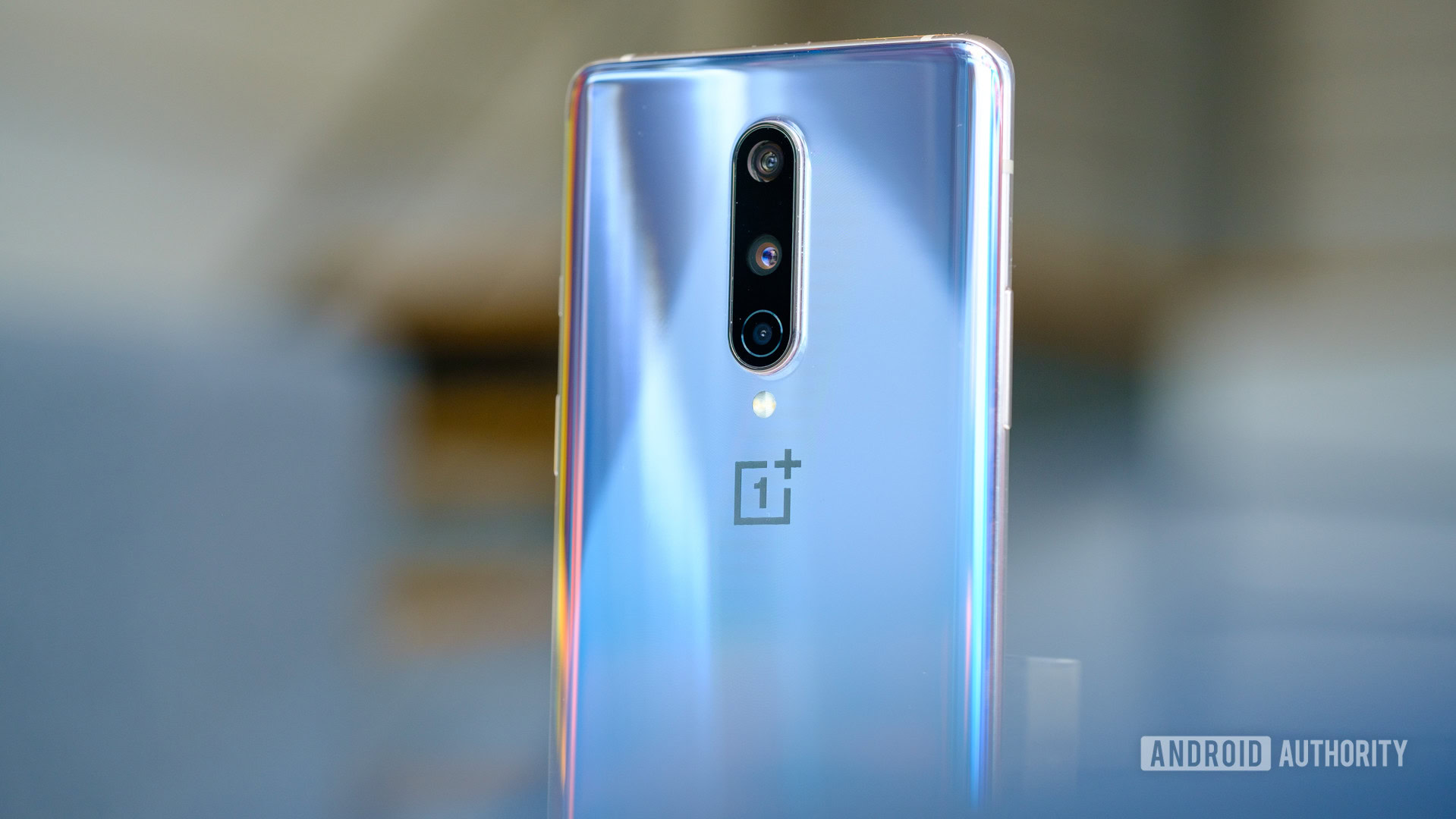
5G: Like many new flagships, the OnePlus 8 family adopts 5G, though not uniformly. Essentially, there’s a 5G version for the US. It is compatible with the 5G networks of AT&T, T-Mobile, and Verizon Wireless. (Verizon’s variant, which is the only to support mmWave, has a truly terrible name: OnePlus 8 5G UW.) We weren’t able to test the 5G model, as OnePlus seeded only the unlocked models. But hey, if you live in the US, you can score a 5G phone for just $699.
Audio: Wireless audio support is top-notch. The phone doesn’t have a headphone jack, but it ships with Bluetooth 5.1, aptX, aptHD, LDAC, and AAC. This is good news for people who’ve jumped on the truly wireless headphone train. Your ride is going to sound outstanding. The stereo speakers are derived from a combination of the bottom-firing speakerphone and the earpiece. Music sounds best when you hold the phone vertically, but landscape video content also sounds decent when you’re watching Netflix or YouTube.
OnePlus 8 specs
| OnePlus 8 Pro | OnePlus 8 | |
|---|---|---|
Display | OnePlus 8 Pro 6.78-inch AMOLED 3,168 x 1,440 (19.8:9) 120Hz refresh rate In-display fingerprint sensor 3D Corning Gorilla Glass | OnePlus 8 6.55-inch AMOLED 2,400 x 1,080 (20:9) 90Hz refresh rate In-display fingerprint sensor 3D Corning Gorilla Glass |
Processor | OnePlus 8 Pro Qualcomm Snapdragon 865 | OnePlus 8 Qualcomm Snapdragon 865 |
RAM | OnePlus 8 Pro 8GB / 12GB LPDDR5 | OnePlus 8 8GB / 12GB LPDDR4X |
Storage | OnePlus 8 Pro 128GB / 256GB UFS 3.0 | OnePlus 8 128GB / 256GB UFS 3.0 2-LANE |
Cameras | OnePlus 8 Pro Rear: 48MP, f/1.78, 1.12µm, OIS, EIS 8MP 3x telephoto, f/2.44, 1.0µm, OIS 48MP ultrawide, f/2.2, 119.7° 5MP color filter, f/2.4 Front: 16MP, f/2.45, 1.0µm, EIS, fixed focus | OnePlus 8 Rear: 48MP, f/1.78, 0.8µm, OIS, EIS 2MP macro, f/2.4, 1.75µm 16MP ultrawide, f/2.2, 116° Front: 16MP, f/2.0, 1.0µm, EIS, fixed focus |
Battery | OnePlus 8 Pro 4,510mAh Warp Charge 30T (5V/6A) Warp Charge 30 Wireless | OnePlus 8 4,300mAh Warp Charge 30T (5V/6A) |
IP Rating | OnePlus 8 Pro IP68 | OnePlus 8 None |
Software | OnePlus 8 Pro Oxygen OS Android 10 | OnePlus 8 Oxygen OS Android 10 |
Dimensions and weight | OnePlus 8 Pro 165.3 x 74.35 x 8.5mm 199g | OnePlus 8 160.2 x 72.9 x 8.0mm 180g |
Value and competition
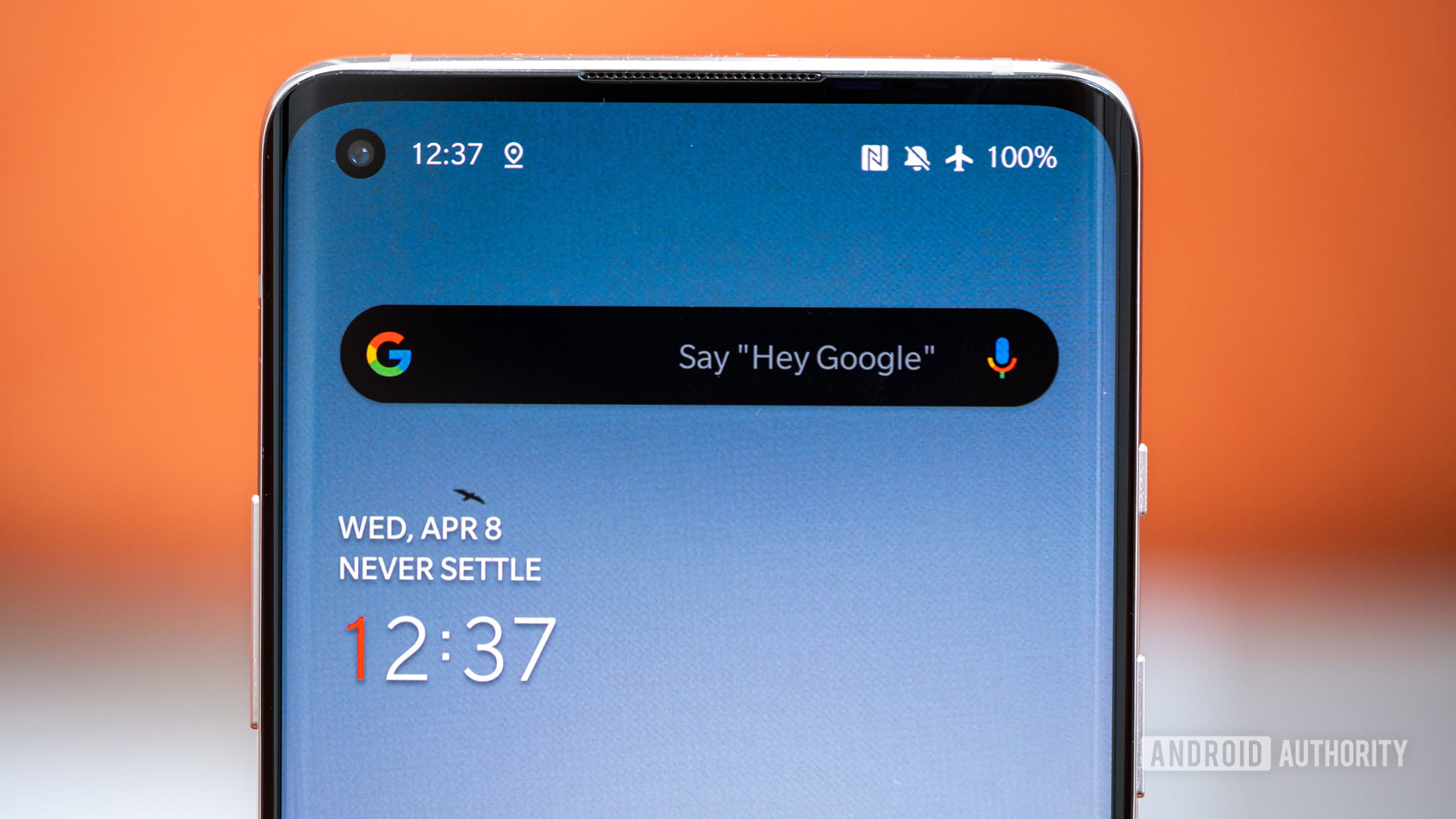
- OnePlus 8 (8GB/128GB): $499
OnePlus has permanently slashed the price of the phone from $699 to $499. The 256GB variant is no longer available. OnePlus has done a pretty solid job of keeping the cost of its phones under $600 over the years. The OnePlus 8 family represented a jump in cost at launch, likely due in part to the pricey Snapdragon 865. You could make the argument that the phone should have the Snapdragon 765G instead, and thereby cost perhaps as much as $50 less. That would have solidified the phone’s hero status without impacting performance. It was not meant to be. Considering what you get here, however, I’m going to say the OnePlus 8 offers reasonably good value for money, even today.
For around $500, you get a Snapdragon 865 phone with a great display, shocking battery life, a passable camera, and good looks to boot. The official starting price of phones such as the Samsung Galaxy S20 and Pixel 4 XL is $899-$999, though they’ve been semi-permanently discounted to $799 and $699, respectively. Both the OnePlus 8 Pro and the LG V60 hover around $899, but they are larger. Some consumers may be put off by the OnePlus 8’s lack of wireless charging, but at least there’s semi-official support for dirt and water protection. The one place competing devices truly win is the camera. OnePlus’ camera isn’t good enough. Again.
The only major knock against the OnePlus 8 is that the OnePlus 9 is a better option with the Snapdragon 888 processor, improved camera system, and palatable price point of $729. If you can afford it, the latest OnePlus series is a big upgrade.
OnePlus 8 review: Should you buy it?
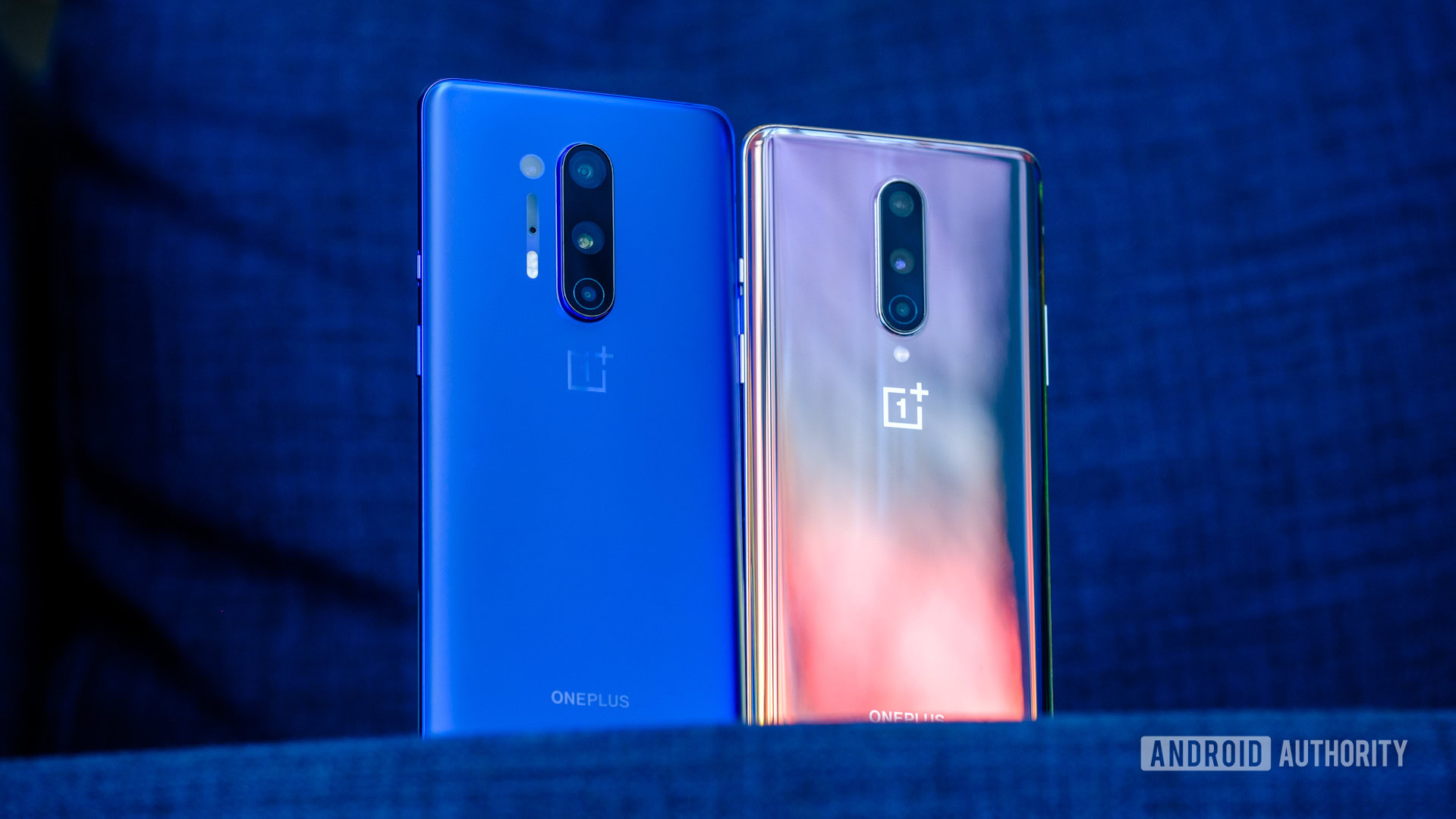
The OnePlus 8 isn’t perfect, and may come across as disappointing to some who consider it too “lite” when compared to the powerful, formidable OnePlus 8 Pro. However, while it may not have the everything-and-the-kitchen-sink appeal of the 8 Pro, it’s got the features that count most.
The price jump, compared to last year’s $559 OnePlus 7, may be a bit much for some. Those seeking the “affordable flagship” now find they have to, in fact, pay near-flagship price for the OnePlus 8. In India, Asia, and some European markets, phones from Xiaomi, realme, and Redmi may represent the better overall value.
At $499, the OnePlus 8 is cheaper than the majority of competing flagships and it still gives you the display, battery, and speed you want. Is the OnePlus 8 watered down? Sure, but water is necessary to grow the best things.
If you need something cheaper and you live outside the US, you might consider the OnePlus Nord. In our review of the Nord, we found it to be a capable device that saw OnePlus return to its roots. It’s affordable and offers lots of value for the money. If you do live in the US, we strongly recommend the OnePlus 9, or even the OnePlus 9 Pro, though you’ll have to pay a little bit extra to get the latest OnePlus phones.